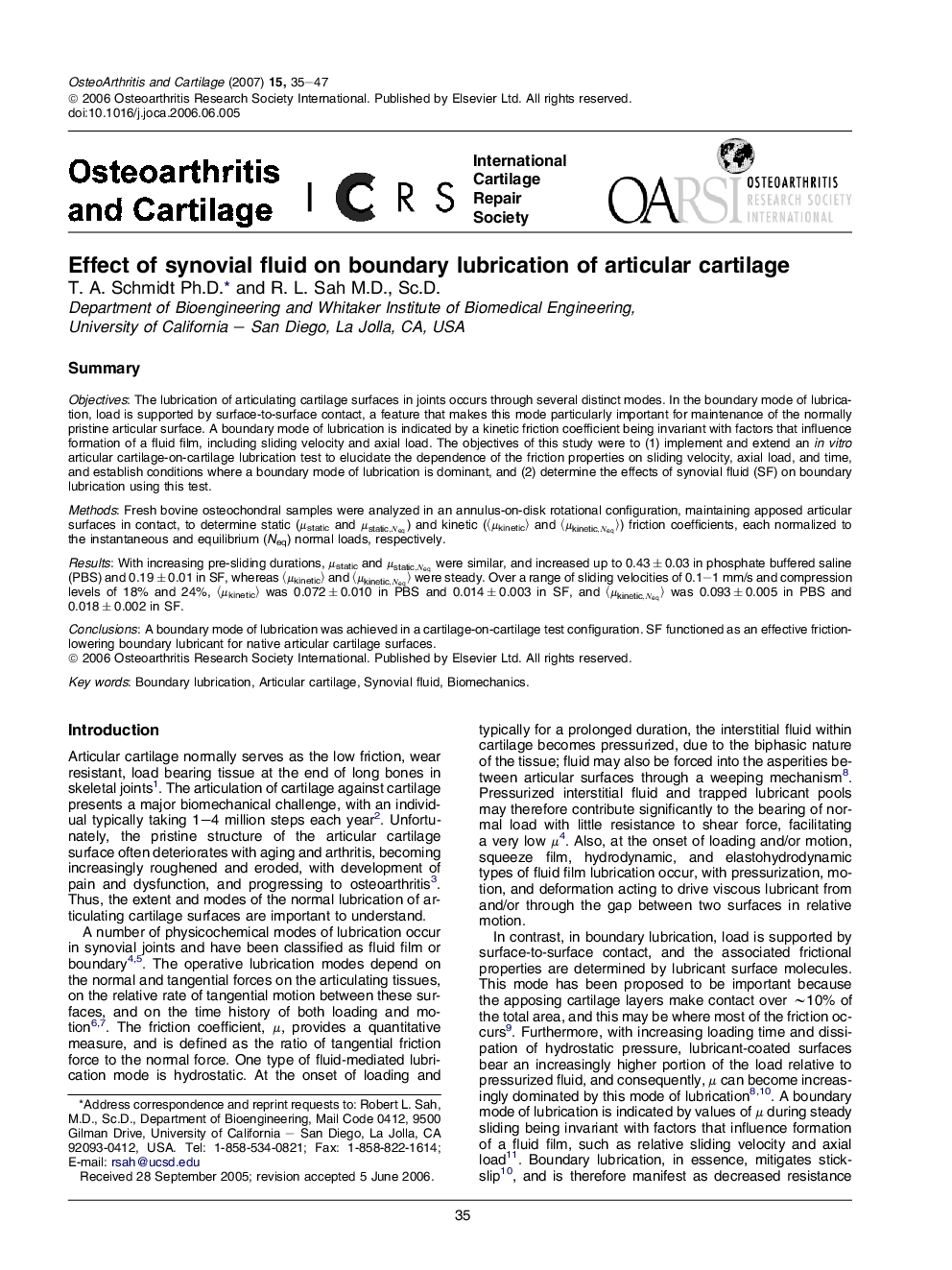| Article ID | Journal | Published Year | Pages | File Type |
|---|---|---|---|---|
| 3381865 | Osteoarthritis and Cartilage | 2007 | 13 Pages |
SummaryObjectivesThe lubrication of articulating cartilage surfaces in joints occurs through several distinct modes. In the boundary mode of lubrication, load is supported by surface-to-surface contact, a feature that makes this mode particularly important for maintenance of the normally pristine articular surface. A boundary mode of lubrication is indicated by a kinetic friction coefficient being invariant with factors that influence formation of a fluid film, including sliding velocity and axial load. The objectives of this study were to (1) implement and extend an in vitro articular cartilage-on-cartilage lubrication test to elucidate the dependence of the friction properties on sliding velocity, axial load, and time, and establish conditions where a boundary mode of lubrication is dominant, and (2) determine the effects of synovial fluid (SF) on boundary lubrication using this test.MethodsFresh bovine osteochondral samples were analyzed in an annulus-on-disk rotational configuration, maintaining apposed articular surfaces in contact, to determine static (μstatic and μstatic,Neqμstatic,Neq) and kinetic (〈μkinetic〉 and 〈μkinetic,Neq〉〈μkinetic,Neq〉) friction coefficients, each normalized to the instantaneous and equilibrium (Neq) normal loads, respectively.ResultsWith increasing pre-sliding durations, μstatic and μstatic,Neqμstatic,Neq were similar, and increased up to 0.43 ± 0.03 in phosphate buffered saline (PBS) and 0.19 ± 0.01 in SF, whereas 〈μkinetic〉 and 〈μkinetic,Neq〉〈μkinetic,Neq〉 were steady. Over a range of sliding velocities of 0.1–1 mm/s and compression levels of 18% and 24%, 〈μkinetic〉 was 0.072 ± 0.010 in PBS and 0.014 ± 0.003 in SF, and 〈μkinetic,Neq〉〈μkinetic,Neq〉 was 0.093 ± 0.005 in PBS and 0.018 ± 0.002 in SF.ConclusionsA boundary mode of lubrication was achieved in a cartilage-on-cartilage test configuration. SF functioned as an effective friction-lowering boundary lubricant for native articular cartilage surfaces.
